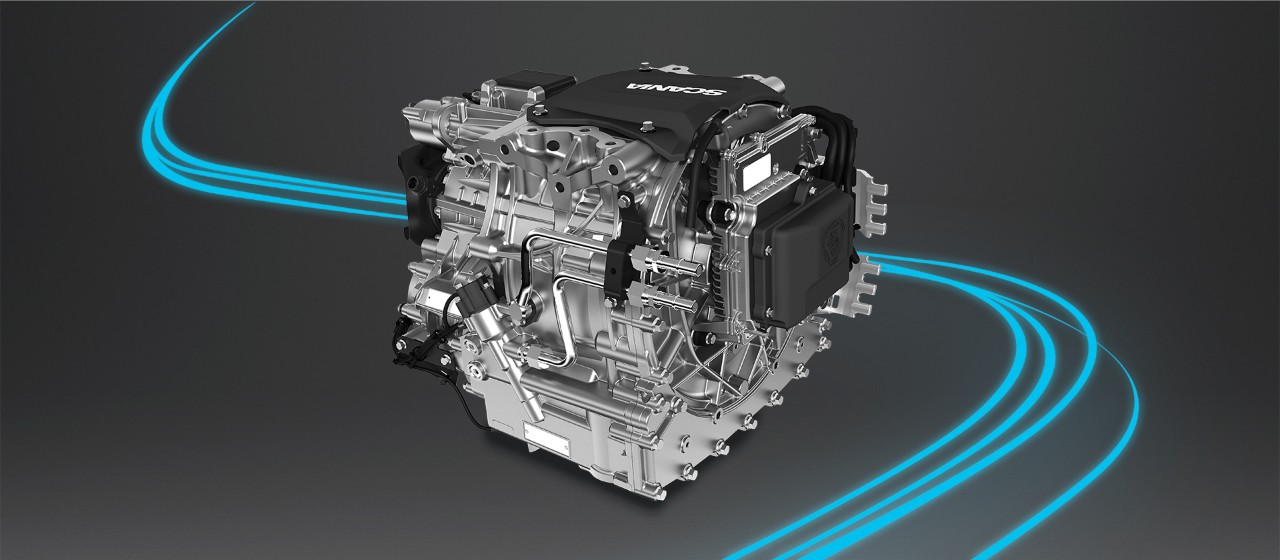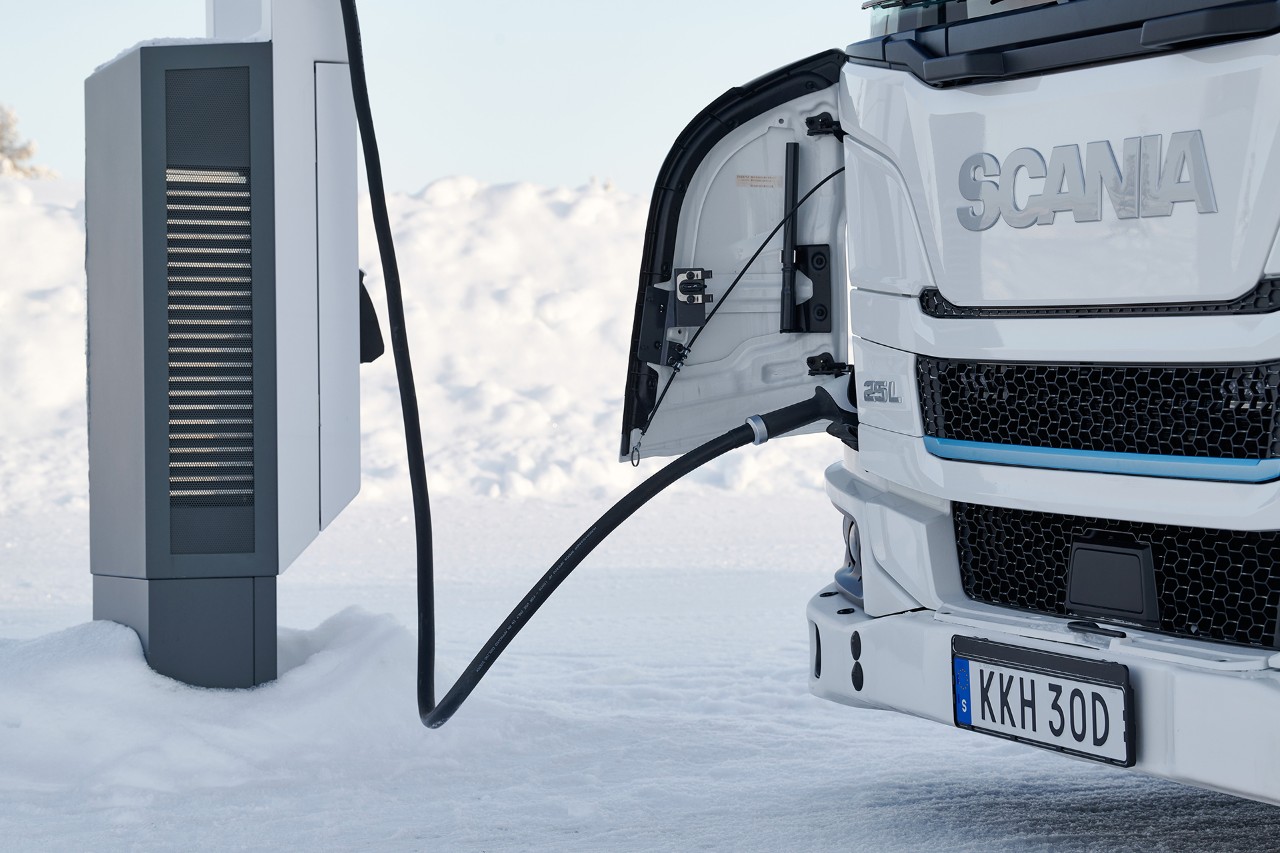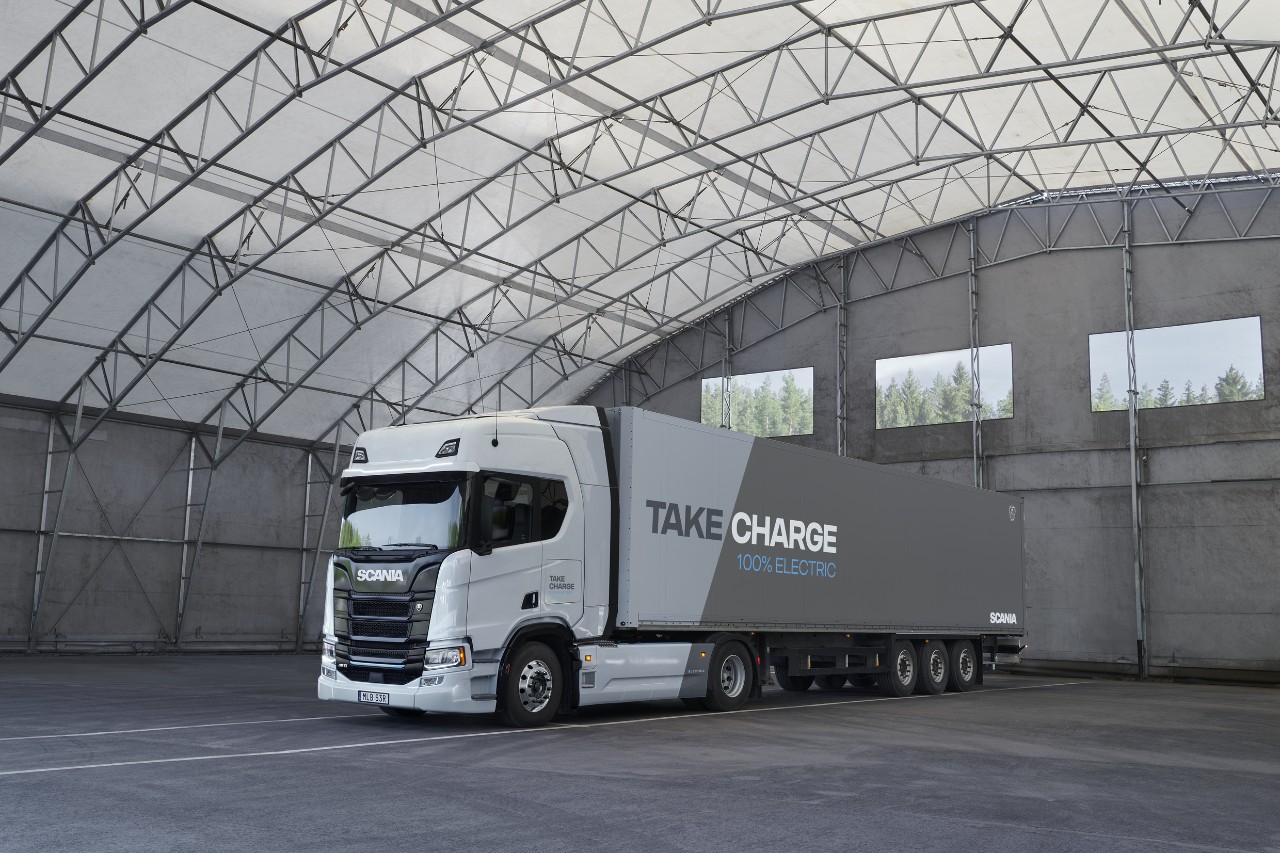
How it works – Scania’s electric truck in eight steps
A battery-electric truck is powered by a super-efficient electric machine. In eight steps, here’s a simple overview of how Scania’s electric powertrain work, from the battery to the wheels.
Batteries
The process starts with the battery pack, which stores electrical energy. In Scania’s BEV trucks, these battery packs are made up of modules of lithium nickel manganese cobalt oxides cells (NMC), which are produced with minimal environmental footprint.
“We always make sure the capacity of the battery packs is optimised for the vehicle’s typical transport tasks and routes,” says Fredrik Sundén, an e-mobility developer at Scania Research & Development.
Battery pack
Power inverter/converter
The direct current (DC) electricity stored in the battery needs to be converted into alternating current (AC) to power the electric machine. A power inverter or converter performs this conversion. AC motors are commonly used in electric vehicles because of their efficiency, power density and easier control of the motor speed.
Electric machine
The converted AC electricity is supplied to the electric machine. In Scania’s BEV trucks, the electric machine is a permanent magnet synchronous machine. This machine converts electrical energy into mechanical energy through a magnetic field in the stator, induced by the AC current, which in turn causes the permanently magnetised rotor to rotate. Scania currently offers three electric machines, ranging from 230 to 450 kW of continuous power.
“A combination of strong magnets and high voltage ensures that we achieve greater power and torque from the electric machine,” says Sundén.
Electric machine
Gearbox
Scania’s electric powertrains include a transmission to optimise torque and power delivery to the wheels. Unlike electric cars, which often can operate efficiently with a single-speed transmission, heavy transport vehicles such as BEV trucks need gears to enable high torque across different speeds. Currently, Scania’s three e-machines include two gears (urban), four gears (regional) and six gears (regional and heavy applications).
Propeller shaft, differential and axles
The power from the electric machine is sent to the wheels via the propeller shaft through a differential and a set of axles.
“Scania’s vast experience in developing energy efficient powertrains, proprietary software and axles means we have a good integration of electric machine, dedicated gearboxes and axles to optimise efficiency and performance for any given application,” says Sundén.
Regenerative braking
A key feature in BEVs is their ability to use regenerative braking. During braking or coasting, the electric motor operates in reverse, acting as a generator. It converts kinetic energy back into electrical energy, which is then sent back to the battery, improving the overall energy efficiency.
“The energy savings from recuperation are dependent on the operation,” says Sundén. “The best scenarios are urban operations or hilly terrain where there is a lot of braking required. In these scenarios the energy efficiency can be improved by 30 percent or more by recuperating the kinetic energy.”
Wheels
The final step is the transfer of power to the wheels, propelling the truck forward, a branch in which an electric powertrain outclasses its combustion engine counterpart.
“All in all, the powertrain of a BEV typically transfers two to four times more energy to the wheels than a combustion engine. The efficiency level of a BEV is around 85 to 90 percent, while combustion engine vehicles often have powertrain efficiency of around 35 percent.”
Digital management and control
Finally, the entire process of Scania’s electric powertrains is managed and controlled by the vehicle’s electronic control unit (ECU) and the Battery Management System (BMS).
“These systems monitor and optimise various parameters such as battery temperature, state of charge, and power distribution to ensure efficient and safe operation,” says Sundén.
Read more

Charging
We help you find the right charging solution for your specific need.
